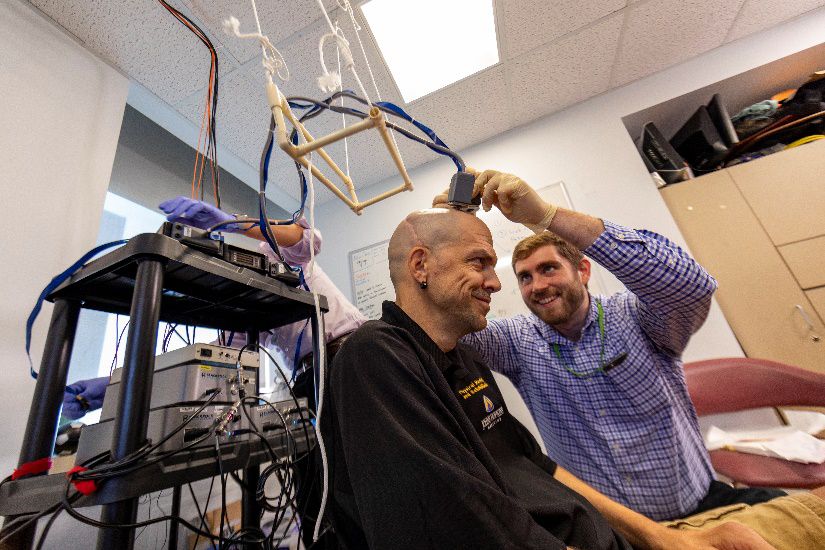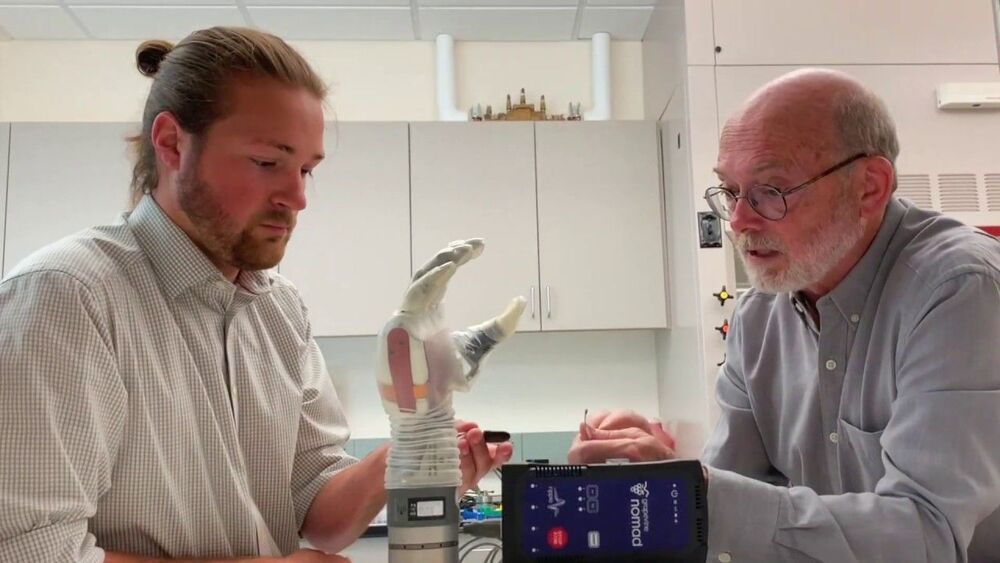Nov 21, 2019
Donald Trump faces presidential challenge from cyborg
Posted by Tanvir Ahmed in category: cyborgs
‘I can no longer stand by and watch America fall short of its epic potential,’ says Zoltan Istvan.
‘I can no longer stand by and watch America fall short of its epic potential,’ says Zoltan Istvan.
Artificial muscles will power the soft robots and wearable devices of the future. But more needs to be understood about the underlying mechanics of these powerful structures in order to design and build new devices.
Now, researchers from the Harvard John A. Paulson School of Engineering and Applied Sciences (SEAS) have uncovered some of the fundamental physical properties of artificial muscle fibers.
“Thin soft filaments that can easily stretch, bend, twist or shear are capable of extreme deformations that lead to knot-like, braid-like or loop-like structures that can store or release energy easily,” said L. Mahadevan, the Lola England de Valpine Professor of Applied Mathematics, of Organismic and Evolutionary Biology, and of Physics. “This has been exploited by a number of experimental groups recently to create prototypical artificial muscle fibers. But how the topology, geometry and mechanics of these slender fibers come together during this process was not completely clear. Our study explains the theoretical principles underlying these shape transformations, and sheds light on the underlying design principles.”
Here’s my new story for Quartz on cyborg and #transhumanist bill of rights! It offers a look at the various ideas around the world surrounding this provocative issue:
Transhumanists are pushing the boundaries of what it means to be human. Our governing principles may need to progress along with them.

https://youtube.com/watch?v=Hw4GWnM2VXY
Brain-connected machines that capture and translate electrical signals are showing great promise across a number of areas, but one with massive potential is the world of prosthetics. Scientists exploring these possibilities at Johns Hopkins University are now reporting a big breakthrough, demonstrating a system that enables a quadriplegic to control two prosthetics arms at once using only his thoughts, and also feel a sense of touch coming back the other way.
The team at Johns Hopkins University has been making some exciting progress in this area through its Revolutionizing Prosthetics program, which was launched by DARPA in 2006. In 2016, we saw a double amputee use his brain to control two of the team’s Modular Prosthetic Limbs (MPLs), bilateral shoulder-level prosthetics that enabled him to do things like move cups between shelves, a first for this kind of research.
Continue reading “First bilateral brain implant gives paraplegic a two-handed sense of touch” »
Are you ready for the future? A Transhumanist future? One where everyone around you—friends, family, and neighbors—has dipped into the transhumanist punch bowl. A future of contact lenses that see in the dark, endoskeleton attached artificial limbs that lift a half-ton, and brain chip implants that read your thoughts and instantly communicate them to others. Sound crazy? Indeed, it does. Nevertheless, it’s coming soon. Very soon. In fact, much of the technology already exists. Some of it’s being sold commercially at your local superstore or being tested in laboratories right now around the world.
We’ve all heard about driverless test cars on the roads and how doctors in France are replacing people’s hearts with permanent robotic ones, but did you know there’s already a multi-billion dollar market for brain wave reading headsets? Using electroencephalography (EEG) sensors that pick up and monitor brain activity, NeuroSky’s MindWave can attach to Google Glass and allow you to take a picture and post it to Facebook and Twitter just by thinking about it. Other headsets allow you to play video games on your iPhone just with your thoughts too. In fact, well over a year ago now, the first mind-to-mind communication took place. A researcher in India projected a thought to a colleague in France, and using their headsets, they understood each other. Telepathy went from science fiction to reality.
The history of transhumanism—the burgeoning field of science and radical tech used to describe robotic implants, prosthetics, and cyborg-like enhancements in the human being and its experience—has come a long way since scientists began throwing around the term a half century ago. What a difference a generation or two makes. Today a thriving pro-cyborg medical industry is setting the stage for trillion-dollar markets that will remake the human experience. Five million people in America suffer from Alzheimer’s, but a new surgery that involves installing brain implants is showing promise in restoring people’s memory and improving lives. The use of medical and microchip implants, whether in the brain or not, are expected to surge in the coming years. Some experts surmise as many as half of Americans will have implants by 2020. I already have one in my hand. It’s truly a new age for humans.

Brain-machine interface enthusiasts often gush about “closing the loop.” It’s for good reason. On the implant level, it means engineering smarter probes that only activate when they detect faulty electrical signals in brain circuits. Elon Musk’s Neuralink—among other players—are readily pursuing these bi-directional implants that both measure and zap the brain.
But to scientists laboring to restore functionality to paralyzed patients or amputees, “closing the loop” has broader connotations. Building smart mind-controlled robotic limbs isn’t enough; the next frontier is restoring sensation in offline body parts. To truly meld biology with machine, the robotic appendage has to “feel one” with the body.
Continue reading “Moving Beyond Mind-Controlled Limbs to Prosthetics That Can Actually ‘Feel’” »
